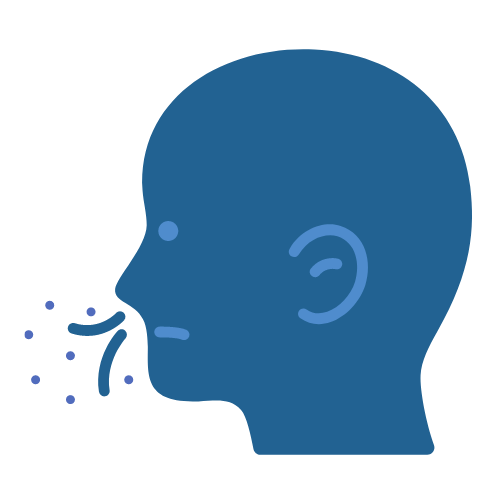.jpg)
Health inequities exist and can greatly undermine a student’s opportunities for academic success and a fulfilling life. By honoring the diversity of students, schools can create pathways for health literacy for all and thus, promote academic equity.
“It is critical that students learn the skills and knowledge in the Health Education Content Standards for California Public Schools, Kindergarten Through Grade Twelve (health education standards) to become healthy individuals.” (HEF Chapter 2, pg 2-3)
“To meet these goals for health education, local districts must emphasize the value of health education for students as individuals and as members of a community whose behaviors and decisions will impact social conditions and local environmental health issues—and districts must provide sufficient support and resources.
A high-quality health education program requires the support and collaboration of all stakeholders within a community. School boards and administrators must ensure a safe and inclusive school environment and secure the resources, knowledge, and skills to effectively promote the development and implementation of a curriculum based on the health education standards.” (HEF Chapter 2, pg 2-3)
 Learning Outcomes for Section 2
Learning Outcomes for Section 2
Upon completing this section, participants will be able to:
- Recognize the impact of health inequities on student success
- Describe health literacy and the role in schools
- Identify the contribution of health education to promoting access and equity
- Value the unique perspectives and health needs of students
- Consider how to identify the school community’s most vulnerable students
- Clarify the administrator’s role in connecting health literacy to support access and equity
- Access curated resources to educate teachers, parents, and other stakeholders
1. Factors That Impact Health Equity
[WATCH] (3 min)
2. What is Health Literacy?
[READ] (3 min)
Health-literate and health-informed students are:
-
Critical thinkers and problem solvers when confronting health issues
-
Self-directed learners who have the competence and skills to use basic health information and services in health-enhancing way
-
Effective communicators who organize and convey beliefs, ideas, and information about health issues,
translating their knowledge to applied practices
-
Responsible and productive citizens who help ensure that their community is kept healthy, safe, and secure
These four essential characteristics of health-literate individuals are woven throughout the Health Education Content Standards and this Framework.
3. Access, Equity and Accessibility
[ANALYZE/WATCH] (4 min)
Ensuring Equity and Access to quality Health Education requires Administrators to Rethink All Aspects of Teaching and Learning.
.jpg)
Administrators must understand and apply knowledge of the differences between equal access, equitable access and accessibility in order to plan for and support schools and teachers delivering quality Health Education instruction resulting student in health literacy.
4. Diversity Matters: Equity and Access
[READ] (5 mins)
“Highlighted below are some groups of
students for whom it is important to acknowledge both the resources and perspectives they bring to school, as well as the specific learning needs that must be addressed in classrooms in order for all students to receive vital health education.
These groups are identified so that schools and districts make
critical shifts to ensure educational access (the opportunity for quality health education for all students) and equity (fair, unbiased, and impartial treatment of all health education students) for all students.”
HEF Chapter 7, pg 3- Students
Identified as Vulnerable (HEF Chapter 7, pg 12)
- Students Who are
English Learners (HEF Chapter 7, pg 13)
- Students Who are
Standard English Learners (HEF Chapter 7, pg 24)
-
Ethnically and Culturally Diverse Learners (HEF Chapter 7, pg 8, pg 26)
- Students Who are
Migrants (HEF Chapter 7, pg 28-29)
- Students
Living in Poverty Students, Experiencing Homelessness (HEF Chapter 7, pg 29-35)
-
Foster Youth (HEF Chapter 7, pg 36-37)
- Students Who are
Advanced Learners and
Gifted Learners (HEF Chapter 7, pg 37-38)
- Students Who Identify as
Lesbian, Gay, Bisexual, Transgender, or Questioning (HEF Chapter 7, pg 39-46)
- Students with
Visible and Non-Visible Disabilities ((HEF Chapter 7, pg 46-47)
- Students Who Have
Experienced Trauma (HEF Chapter 7, pg 54-55)
5. Diversity Matters: Shared Responsibility
[READ] (2 min)

“The greater the diversity in classrooms and schools, the richer the health education experience and the more assets upon which teachers may draw to enrich the health education experience for all.
At the same time, the more diverse the classroom, the more complex the teacher’s role becomes in providing high-quality instruction that is sensitive to the needs of individual students and leverages their particular assets.
In such multifaceted settings, the notion of shared responsibility that includes a deeper understanding of the health education standards and its application to real life situation is critical.
Teachers, administrators, specialists, expanded learning leaders, parents, guardians, caretakers, families, school support staff (such as school counselors, school nurses, and school social workers), community partners (such as school-based health centers), and the broader school community need the support of one another to best serve all students.”
HEF Chapter 7, pg 2
6. Diversity Matters: Administrator Responsibility

[READ] (2min)
“To provide the comprehensive health education that students need and parents, guardians, and caretakers want,
local school boards and district- and site-level administrators must demonstrate they value health education by allocating appropriate time and resources for effective implementation of health education.
Health education that supports the development of health literacy in all students should be a priority as administrators and district-level personnel develop policies, plans, and budgets.
Administrators are responsible for ensuring that health education instruction is provided by appropriately credentialed teachers—in particular, teachers with credentials in health science or health education for middle and high school grade levels that require single-subject credentials.” (HEF Chapter 2 pg 4)
7. Reflecting for Understanding
-
 Do you know which students are
experiencing health disparities?
Do you know which students are
experiencing health disparities? - What role might Health Education play in preparing ALL students’ to be MORE READY for college and career success?
- How might the “health disparities” and lack of access to health care and equity in health education described in this module negatively affect student motivation and behavior, school attendance and academic performance?
- List 3 ways you might advocate for the health of ALL students in your school community?
 Guided Meditation
Guided Meditation
[BREATHE] (30 secs)
Not currently included in time estimate for section.
